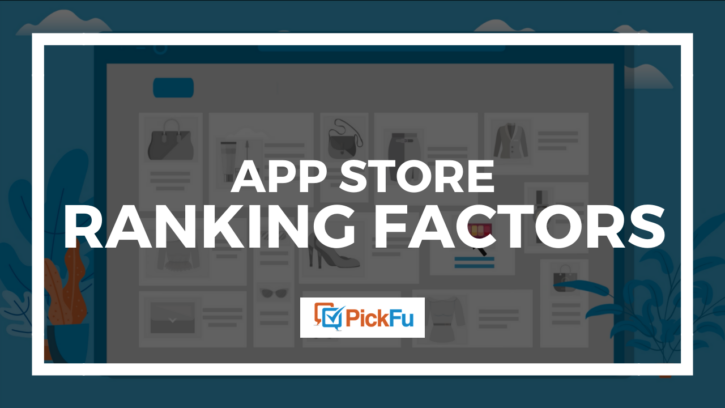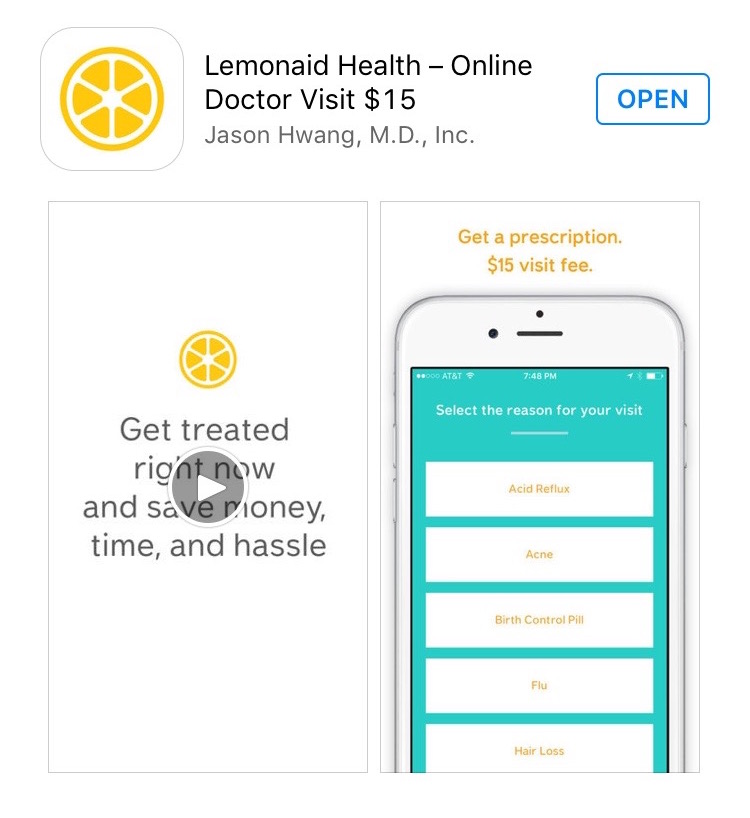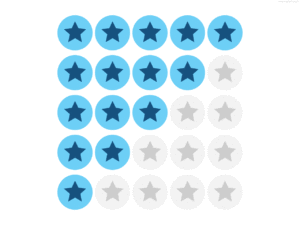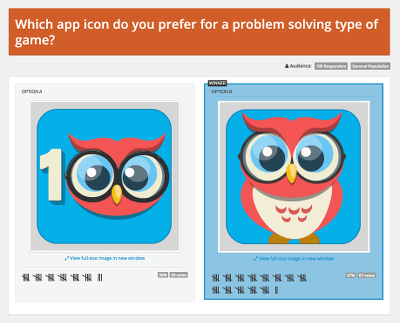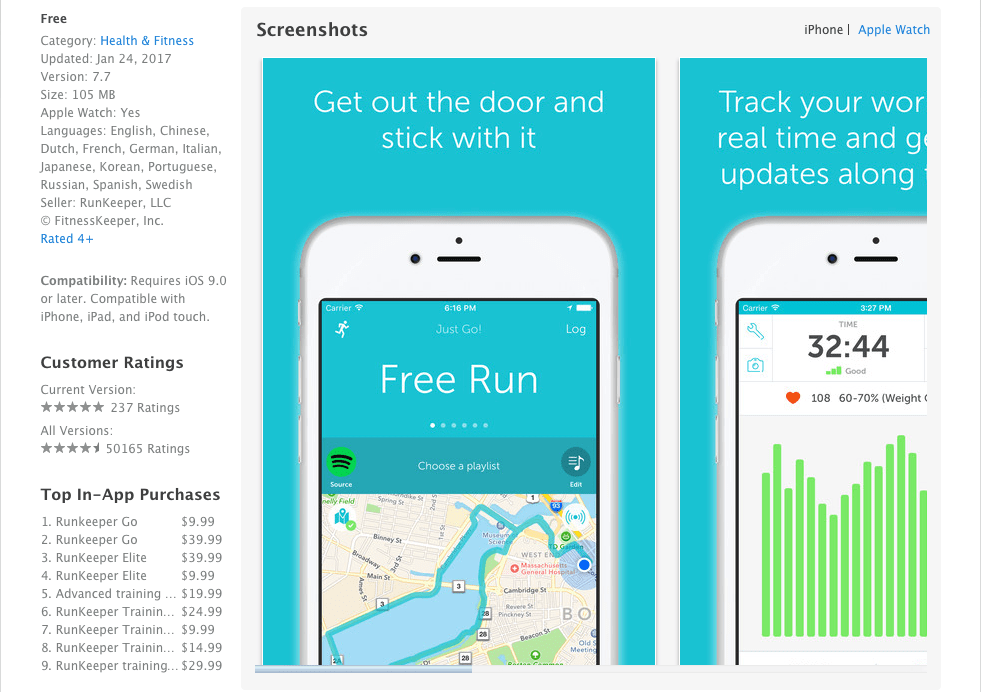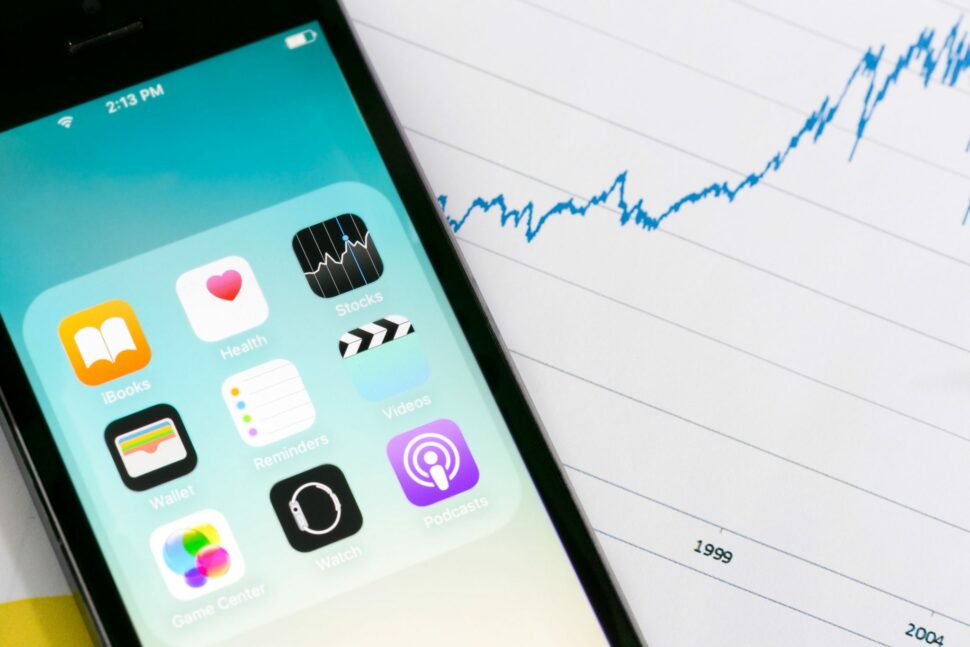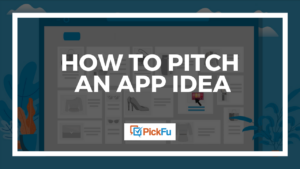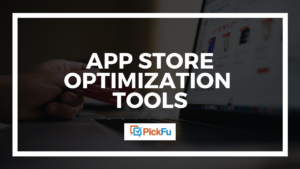The key to success in the App Store is to optimize, optimize, optimize. In this article, we’ll introduce five key App Store ranking factors and how to master them.
5 App Store ranking factors
1. App name
Coming up with a short, memorable app name from just an idea is tough. A great name is a crucial factor that decides whether or not your app is going to get love from users. Of course, you want to try to include keywords in your app name. But beyond that, you want a name that clicks with people. Think about app names that people talk about with their friends: Waze. Candy Crush Saga. Words with Friends. Then emulate them by listing memorable, brandable ideas for your app.
How do you know when you’ve found the right app name? Create a poll on PickFu to test your app name and see what real consumers think. PickFu enables you to get specific about the target customer you want to poll, such as cat owners, mobile gamers, or people with iOS devices.
2. Target keywords
Optimizing your keywords will help users find your app. There are tools like Apptweak that are specifically for ASO (App Store optimization) and are equipped to help you discover the best keywords to use in the app store. But if you want some free and quick tips, read on. First, you can search for one of your keywords in the App Store or the Google Play Store and peruse the searches that autofill. Second, look at your competitors and see what keywords they use.
3. User ratings and reviews
No one is going to download your app if it has a bad rating. If it has no ratings, that also gives people pause. If you want users to rate you, prompt them. The key here is to program that window asking for a rating to pop up at a moment when you know a user is happy with the app, such as when they successfully complete an action. If your app is a game, prompt them when they win big or level up. At that point, if they see a pop-up that says something like “Enjoying the app? Rate us!” they might feel compelled to give back to you, the creator. The language of the prompt is important: you don’t want users to find it annoying, you want to spur them to act. This is another area that you can optimize with A/B testing. Another highly effective way to get those ratings and reviews is to incentivize your users. Trade reviews for credit on the app, unlocking higher levels, and more.
4. Visual assets
Visual assets that you should optimize include app icon, screenshots, and video.
Your app icon is the first thing potential users are going to see when they search for your app. Looking at this little image, they will decide in a split second whether your app is worth their time. If they do download it, they’re going to see that icon on their phone screen every day. Needless to say, it has to be excellent. You’ll want to keep things simple. Consider using your brand’s logo. Stick with a simple design and limited color palette (and choose colors that are part of your branding).
A/B testing these visual elements is a must. The developers of a mobile strategy game tested their app icon with PickFu earlier this year and discovered that audiences found option A confusing and cheesy (see below). Yikes. Thank goodness they tested first!
Screenshots play an important role: they let potential customers see what using your app is like before they commit. In these images, you want to show how the user can get the most out of the app. Display moments of success, like getting a high score or saving money. By the way, your screenshots don’t have to actually be screenshots. Take these screenshots from Runkeeper, for instance. These images show a full iPhone with the app on screen and include copy above to give context.
The App Store allows you to create screenshots for different Apple devices, so be sure to familiarize yourself with the specs they provide to ensure that your image is crystal clear.
In a PickFu poll from earlier this year, the developers of a mobile game tested out the following app screenshots on an audience and learned that the majority of people preferred a colorful background to a plain one.
Both the App Store and the Google Play Store allow you to upload a video. On the App Store, this is called an app preview. In the Google Play Store, it’s called a promo video. Both stores have guidelines for video length, file size, and more that you’ll need to abide by. When planning the video, you want to make sure that users will be able to understand it without sound, because not everyone is going to have their sound turned on. Lastly, you want to lead with the most important elements, because people are prone to not watching videos to the end.
5. Number of downloads
It isn’t just the number of downloads that matters, but the rate of downloads. For example, if an app was only released a month ago, its total downloads will be fewer than an older app, but if it’s being downloaded more frequently, it will still rank strongly. The way to get more downloads is to get the word out. Advertise. Pitch journalists so you can get some great media coverage. Create a blog and fill it with valuable SEO content. Another trick is to make your app free for a limited time: people will take advantage!
Retention rate is another facet to consider in App Store ranking factors. If people immediately decide they hate your app and delete it, that hurts your ranking. Read your app’s reviews to see if you can identify — and then fix — any reasons people cite for giving up on your app, especially technical issues.
If you spend time and effort optimizing these App Store ranking factors, you will be giving your app the best possible chance of success.
